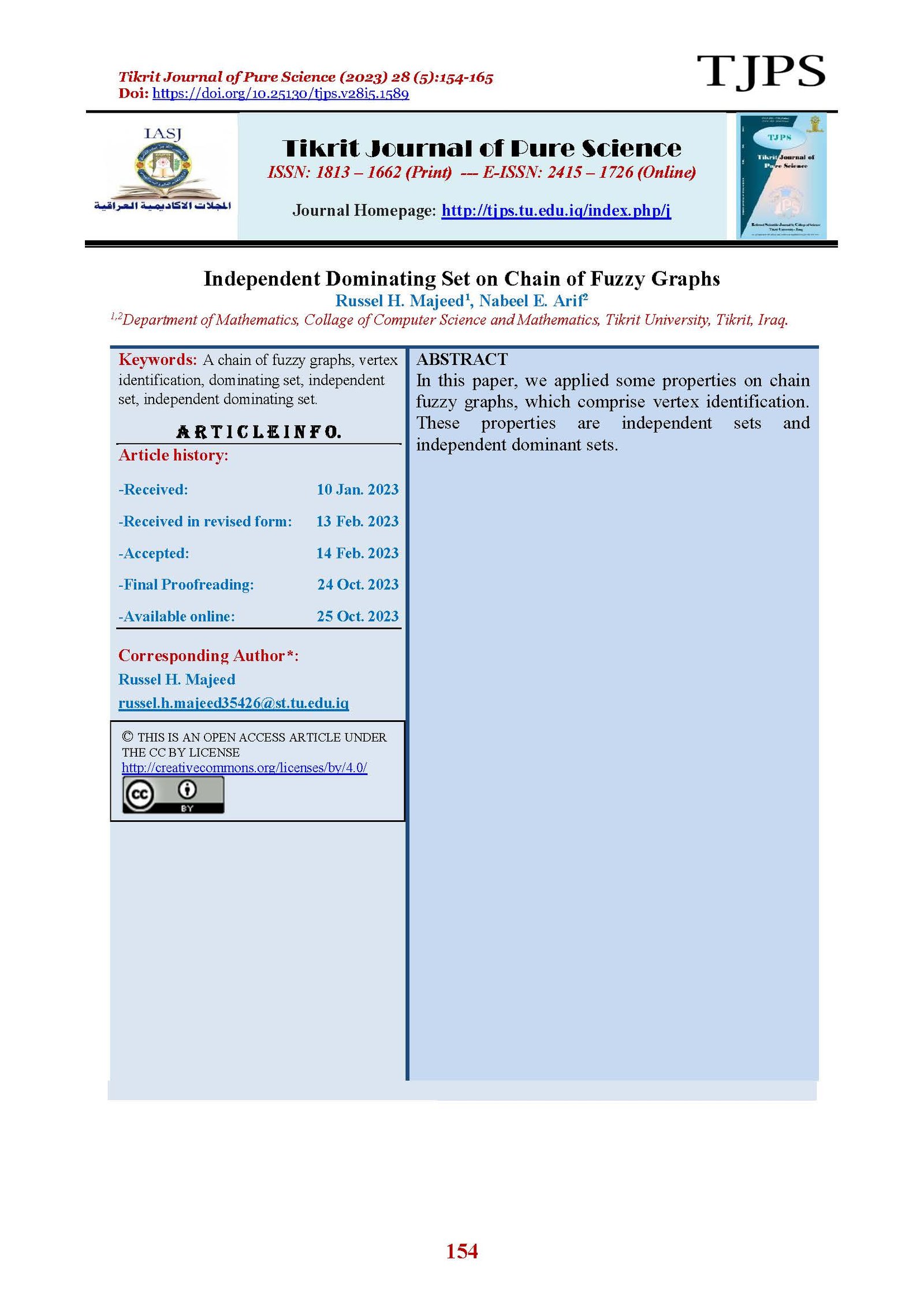Independent Dominating Set on Chain of Fuzzy Graphs
Main Article Content
Abstract
In this paper, we applied some properties on chain fuzzy graphs, which comprise vertex identification. These properties are independent sets and independent dominant sets.
Article Details

This work is licensed under a Creative Commons Attribution 4.0 International License.
Tikrit Journal of Pure Science is licensed under the Creative Commons Attribution 4.0 International License, which allows users to copy, create extracts, abstracts, and new works from the article, alter and revise the article, and make commercial use of the article (including reuse and/or resale of the article by commercial entities), provided the user gives appropriate credit (with a link to the formal publication through the relevant DOI), provides a link to the license, indicates if changes were made, and the licensor is not represented as endorsing the use made of the work. The authors hold the copyright for their published work on the Tikrit J. Pure Sci. website, while Tikrit J. Pure Sci. is responsible for appreciate citation of their work, which is released under CC-BY-4.0, enabling the unrestricted use, distribution, and reproduction of an article in any medium, provided that the original work is properly cited.
References
[1] Mathew, S.; Mordeson, J. N. and Malik, D. S. (2018). “Fuzzy graph theory”. Berlin, Germany: Springer International Publishing, (Vol. 363).
[2] Abdullah, M. M. and Ali, A. M. (2020). “Schultz and Modified Schultz Polynomials of Vertex Identification Chain for Square and Complete Square Graphs”. Open Access Library Journal, 7(5): 1-10.
[3] Somasundaram, A. and Somasundaram, S. (1998). “Domination in fuzzy graphs–I”. Pattern Recognition Letters, 19(9): 787-791.
[4] Nagoorgani, A. and Vadivel, P. (2007). “Fuzzy independent dominating set”. Advances in fuzzy sets and Systems, 2(1): 99-108.
[5] Al Mutab, H. M. (2019). “Fuzzy Graphs”. Journal of Advances in Mathematics, 17: 232-247.
[6] Pal, M., Samanta, S. and Ghorai, G. (2020). “Modern trends in fuzzy graph theory” Berlin: Springer. (pp. 7-93).
[7] Gani, A. N. and Vadivel, P. (2008). “On domination, Independence and irrenundance in fuzzy graph”. International Review of Fuzzy Mathematics, 3(2):191-198.
[8] Gani, A. N., & Vadivel, P. (2011). “A Study on domination, independent domination and irredundance in fuzzy graph”. Applied Mathematical Sciences, 5(47): 2317-2325.
